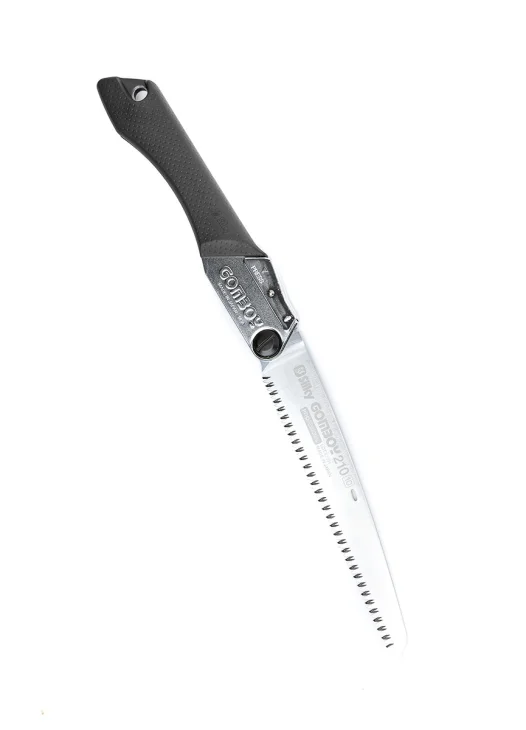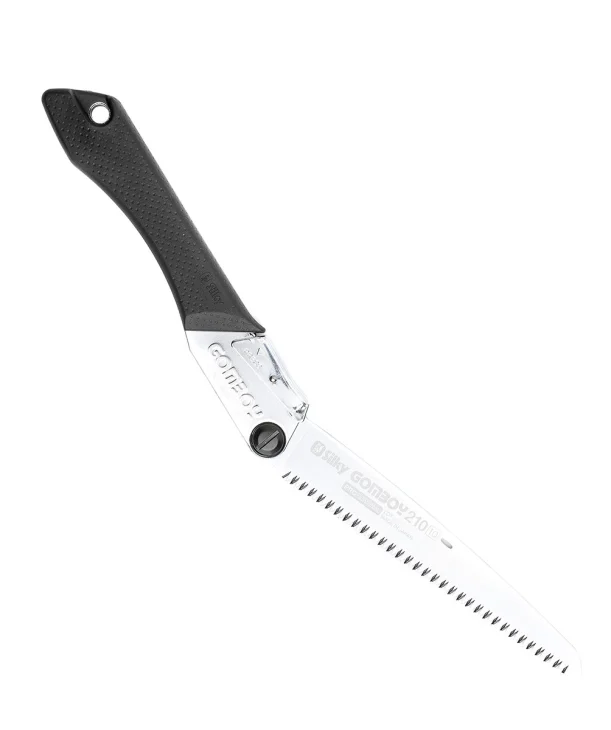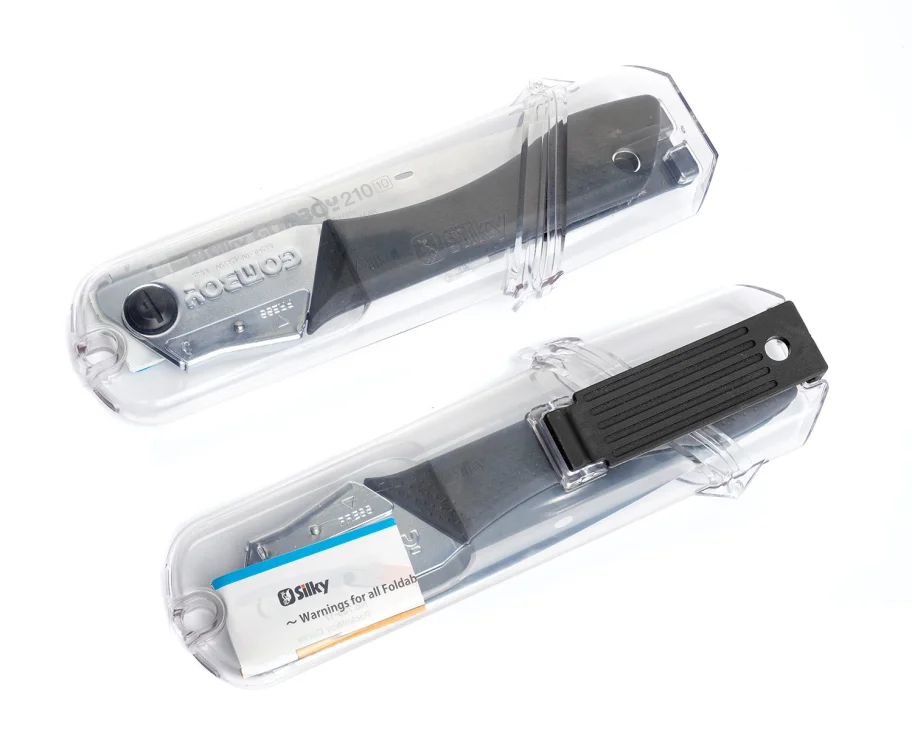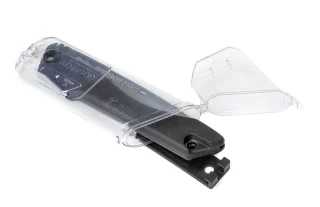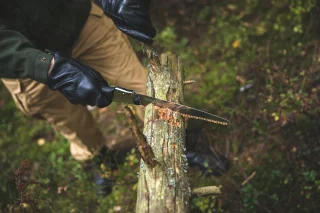Here’s a fantastic multifunctional saw for hunting, hiking and bushcraft. Compact, lightweight and easy to carry in your backpack even on longer hikes. This and Bigboy are very popular among our bushcraft gang. Both are excellent saws. The choice simply depends on whether you want more cutting power or a smaller size.
Blade
This Silky Gomboy comes with a 210 mm (8.3") blade. There are smaller and larger Silky saws available. The blade length you want depends on the diameter of the wood you want to cut. A rule of thumb is that the blade should be at least twice as long as the branch. Of course, the longer the blade, the faster the job gets done. So, bring along the biggest saw you want to carry.
This saw has Medium teeth, which are at their best for softwood. They can handle hardwood as well, but not with the same engineer-like precision as small teeth. They are nevertheless easier to control than the larger teeth and produce a cleaner finish. Medium is a very multifunctional tooth configuration, giving you sort of the best of both worlds. If you want to cut big trees and the coarse finish isn’t a problem, go with bigger. If you like even more accuracy and control, go with smaller.
The precision-ground teeth have four cutting surfaces each. Unlike classic Western saws, they are "non-set", so the teeth don’t tear the wood, instead, they create a very fine and smooth saw cut. The clever design of the teeth has several advantages. You can saw faster with less power and the blade doesn’t get stuck in the wood that easily. The impulse-hardened teeth cannot be sharpened with a hand file but they last three times longer than non-treated teeth. If needed the saw blade can be easily replaced.
Use
Because of its size and teeth configuration, this saw is ideally suited for longer hikes and regular sawing needs in the wild. Cutting poles for shelters, sticks for pot hangers, making firewood, etc. The Gomboy can easily handle wood that has gotten wet or was covered by a layer of snow for a long time. In case you need to clear away thick trees, go with a bigger one.
Unlike the western saws, Japanese saws cut on the pull stroke. Pulling keeps the blade straight, so the blade can be thinner without feeling wobbly. They are also easier to use because pulling is easier to control than pushing and they take less energy. In case you need to cut branches of a fallen tree while sitting in a canoe, better controllability is something you really want.
Made by Silky
Silky is a Japanese company with 100 years of experience in the production of handsaws. They offer a complete range of saws - from folding saws to fixed saws, from curved to straight saw blades, each with a wide selection of teeth configurations. They are used by professionals and hobbyists all over the world for pruning, woodworking, bushcraft, hiking, hunting, and home use. Silky saws are manufactured in Ono, Japan.
Demijan D.
Asaf D.
Store
00390 Helsinki
Mon-Fri 10:00-20:00
Sat 10:00-19:00
Sun 12:00-17:00
Exceptions to opening hours on the Store page.
Propaganda
Contact us
[email protected]
Mon-Fri 08:00-20:00 EET
Sat 10:00-18:00 EET
Sun 10:00-18:00 EET
See all Contact Information.
